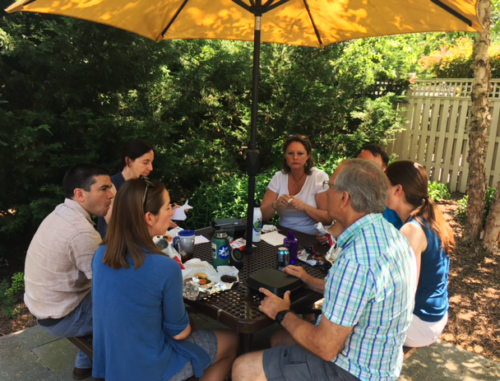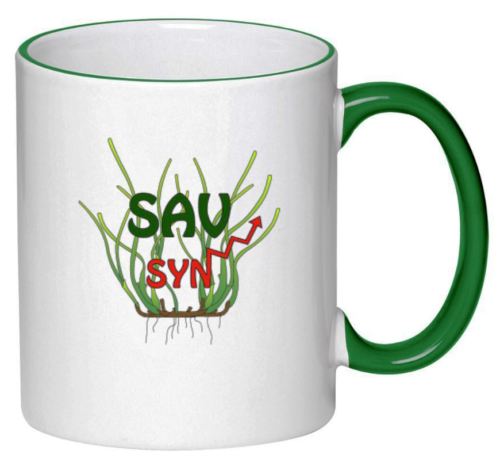More lessons on how to synthesize science
Bill Dennison ·In a previous blog, I suggested six elements for science synthesis that we have employed in the Submerged Aquatic Vegetation Synthesis (SAV SYN) effort. These six elements were the following:
- Experienced leadership
- Limited size
- Multiple immersive workshops
- Regular communication
- Flexibility
- Product focus
I also discussed the following enabling conditions:
- compelling topic with enabling data
- resource manager support and collaboration
- nominal support for leveraging purposes.

At the end of our final SAV SYN gathering we brainstormed with the SAV SYN team, and we came up with three additional key elements:
7) Conducive location. The real estate adage that the top three elements to consider with a property are "location, location, and location" holds true for scientific synthesis. We held three of our four workshops in Annapolis, which was a popular choice for several reasons. The walkable neighborhoods and close proximity of hotels, restaurants, and pubs were important. The SAV SYN team also appreciated the multiple water views afforded by being in Annapolis. Since every participant is a Chesapeake Bay researcher, the ability to glimpse the Bay was a bonus. The UMCES Annapolis Office had good internet connectivity, extensive white boards, and numerous rooms. With our SAV SYN group, we were also able to save money on hotel rooms because several people were able to return home or stay with relatives due to Annapolis's central location.
8) Clear goals and objectives. We had the advantage of Rich Batiuk's thoughtful set of management objectives, and took time to develop our scientific objectives as well (including target journals for publication). The first session together was focused on reviewing and revising these goals and objectives and each subsequent session included a review of our progress against the goals.
9) Fun. The feedback from the SAV SYN group was that what they enjoyed the most was the fun they had working as a team. Bob Orth and I carefully selected the team members and they enjoyed one another's company, both formally and informally. We created a project logo, and even had coffee mugs produced with our SAV SYN logo. The food and drink that we shared was enjoyable. The poems, limericks and drawings that we produced were fun as well. We spent time at the beginning to get to know one another, and took breaks throughout workshops as well.

We also developed the following three recommendations for future synthesis efforts:
- Include graduate students and/or Chesapeake Bay Program staffers. Providing opportunities to expose young scientists to synthesis efforts would help build our capacity. Bob Orth and I included a couple of graduate students in our Seagrass Trajectories synthesis efforts at the National Center for Ecological Analysis and Synthesis and they proved to be some of the most valuable team members. We did have postdocs in SAV SYN, but not including students or staffers was an oversight in retrospect.
- Slightly longer immersive workshop sessions. The importance of immersive workshops is to displace the distractions of everyday life to really focus on the SAV SYN topics. The short 2-3 day workshops allowed us to develop a focus, but several people felt that the later workshops would have benefited from an extra day so that the analyses and the writing could take place while the topic was fresh. The negative tradeoffs of scheduling longer workshops need to be weighed against the effectiveness of walking away from the workshop with a more complete draft of the figures and manuscripts.
- Flexible small funding for specific project tasks. It was recommended that a limited amount of funding be set aside for project tasks. This funding could be designated for data aggregation, directed by team members. Another example of targeted funding would be the creation and printing of communication products.
In discussing the enabling conditions for science synthesis, the topic of including people with vested interests came up. In this case, vested interests are a good thing, as it means that the people involved have an abiding interest in making the project successful. They will work harder and provide leveraged resources to insure a successful end result. Examples in the SAV SYN team include Bob Orth, who has been funded for three decades to commission aerial photography, conduct ground-truthing and analyze the imagery to generate annual Chesapeake Bay SAV maps. The synthesis papers provide Bob and his team with powerful justification for continued SAV surveys. I, too, have a vested interest. In my case, the Integration and Application Network is committed to scientific synthesis in service of better environmental management and the opportunity to showcase SAV SYN efforts could establish additional synthesis opportunities. In one sense, the entire team had a vested interest, in that they were inspired by the opportunity to co-author scientific publications, something that helps everyone in terms of career development.

The Chesapeake Bay Program currently has a talented cadre of scientists with impressive analytical skills. In addition, the Bay Program has developed extended high quality databases, with many data sets extending for thirty years. This combination of good data and excellent scientists provides opportunities for productive synthesis efforts like SAV SYN. Hopefully, these lessons for scientific synthesis will help guide successful future synthesis efforts.
About the author
Bill Dennison

Dr. Bill Dennison is a Professor of Marine Science and Vice President for Science Application at the University of Maryland Center for Environmental Science.

